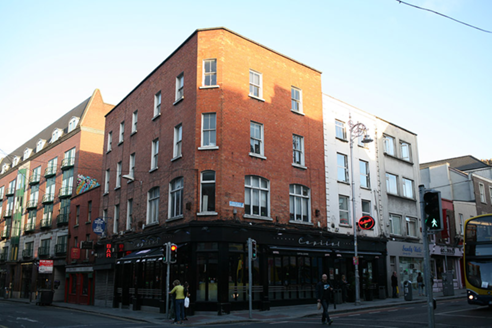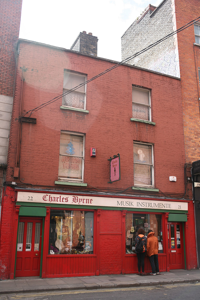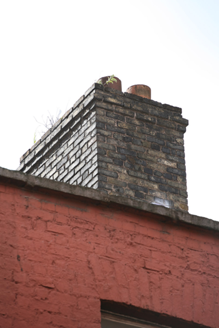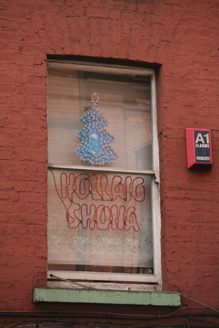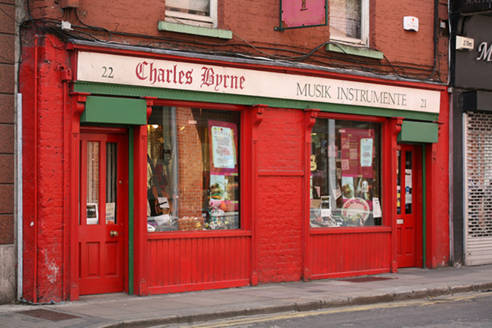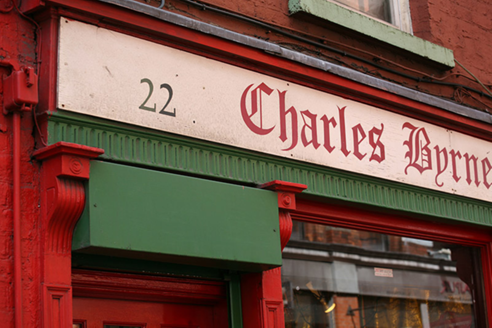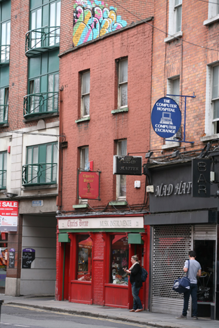Survey Data
Reg No
50920105
Rating
Regional
Categories of Special Interest
Architectural, Artistic, Social
Original Use
House
In Use As
Shop/retail outlet
Date
1730 - 1770
Coordinates
315607, 233719
Date Recorded
04/08/2015
Date Updated
--/--/--
Description
Attached two-bay three-storey over concealed basement former townhouse, built c. 1750, with traditional shopfront inserted to ground floor. Now in use as shop. Flat roof concealed behind brick parapet wall having granite coping. Buff brick chimneystack with replacement clay pots to centre. Brick walls laid in Flemish bond. Gauged brick square-headed window openings with masonry sills and one-over-one timber sash windows having ogee horns. Symmetrical timber shopfront comprising pair of fixed-pane display windows with sheeted timber stall risers and square-headed door openings to either end, all flanked by slender flat-panelled pilasters and scrolled console brackets supporting full-span fluted frieze and timber fascia. Replacement timber panelled and glazed doors with steel roller shutters concealing rectangular overlights. Cast-iron basement grille to front pavement set in granite surround. Rear elevation abutted by two-storey flat-roofed cement rendered extension. Street fronted on south side of Lower Stephen Street, abutted to No. 1 Aungier Street (50920107).
Appraisal
Dublin Civic Trust's 'Survey of Gable-Fronted Houses and Other Early Buildings of Dublin' (2012) states 'Named after a leper hospital and the church of St. Stephen dating from the 12th century, Stephen Street retains its largely late medieval layout. Reputedly destroyed by fire to the interior, the exterior of No. 21-22 retains an early appearance, with quaint diminutive proportions and a central chimneystack. It appears to be the same shallow, rectangular building depicted on Rocque’s map of 1756 with a laneway running along its eastern side. With its charming vernacular shopfront, the building forms part of a dwindling collection of early structures that once characterised this historic narrow streetscape.'
